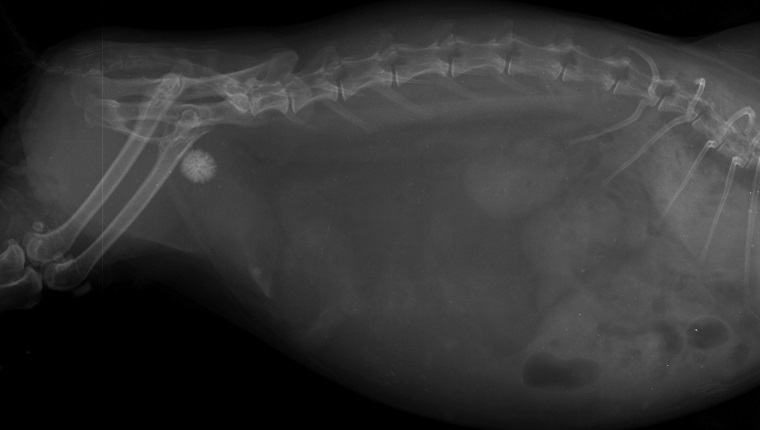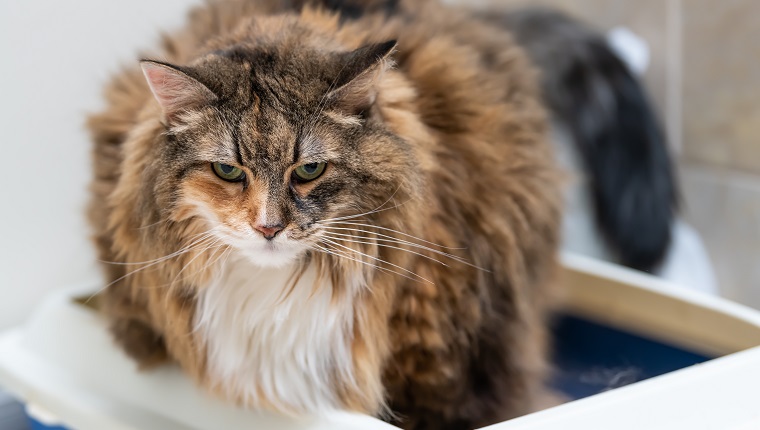Urolithiasis in cats is a medical condition where stone-like deposits of calcium oxalate form in the urinary tract.
Although this condition seems to affect dogs more than their feline counterparts, older cats do seem more likely to develop the condition than younger kitties — and certain breeds including Himalayans, Scottish Folds and Persians develop the condition more than other cat breeds.
In general, dietary changes can be a smart way to lessen the chances of calcium oxalate deposits forming in your cat’s urinary tract.
If you see signs that your feline might be suffering from this condition, then you must consult your veterinarian for a proper diagnosis and course of treatment. Here’s what you should know about the symptoms, causes, and treatments of urolithiasis in cats.
Symptoms Of Urolithiasis In Cats
Urolithiasis in cats is a condition that mostly results in the symptom of a cat straining a lot when they are attempting to use the litter box and urinate.
Additionally, cat might suffer from a swollen belly area.
Causes Of Urolithiasis In Cats

The cause of urolithiasis in cats is higher than normal levels of calcium being present in the urine. Some of the most common factors that can cause this include:
- Eating a dry food only diet
- Taking steroids
- Not receiving enough vitamin B6
- Taking calcium supplements
- Ingesting too much vitamin D
Additionally, certain specific breeds of cat have a higher predisposition for this condition. Those breeds include:
- Scottish Fold
- Persian
- Burmese
- Himalayan
- Ragdoll
Veterinary Treatments
If you suspect that your kitty is suffering from urolithiasis, your veterinarian will want to carry out a full physical examination. Your vet will also take urine samples and perform an X-ray or an ultrasound to determine the severity of the condition.
When it comes to treatment, a surgical procedure to remove the calcium deposits can be an option. Sometimes this process can involve the use of shock waves to break up the stone-like deposits so they can pass with the cat’s urine.
Other options include attempting to flush out the calcium deposits and tweaking a cat’s diet. As ever, before making any large changes your cat’s diet, consult with your veterinarian to make sure that all your feline’s nutritional needs are being safely met.
Has your cat ever developed urolithiasis? How did your vet remove the calcium oxalate deposits? Tell us all about it in the comments below.




